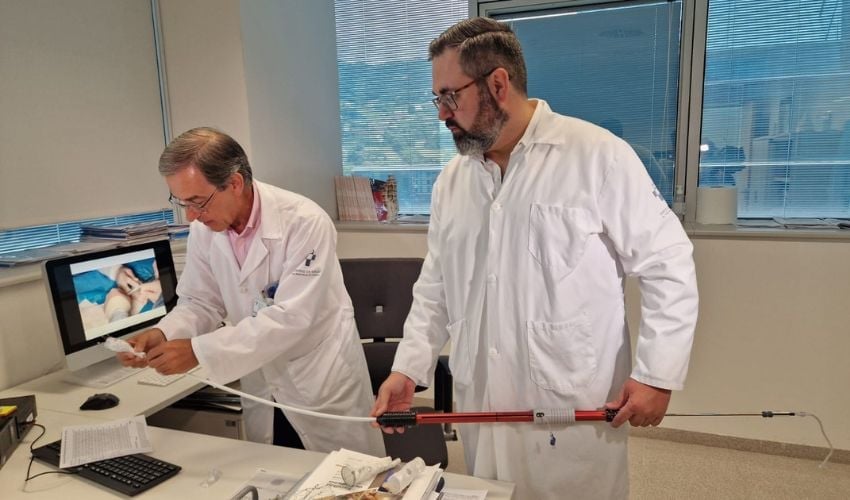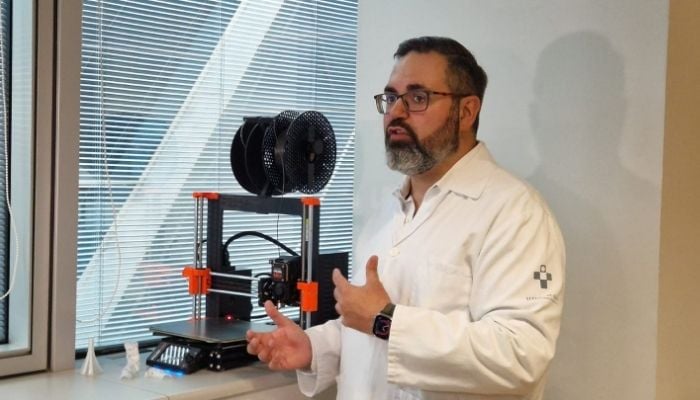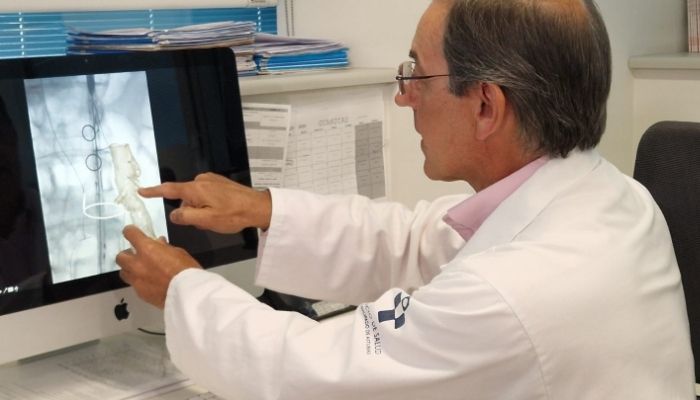HUCA Team Uses 3D Printing to Treat Aortic Aneurysms

According to the Spanish Society of Cardiovascular and Endovascular Surgery, a significant portion of the population over 60 is at high risk of developing an abdominal aortic aneurysm. When these lesions affect areas with branches leading to vital organs, treating them becomes a real puzzle for surgeons. In Oviedo, the Central University Hospital of Asturias (HUCA) has found a solution: using 3D printing to create customized prostheses and implanting them through a minimally invasive procedure.
An aneurysm is, in simple terms, a bulge that forms in an artery. In the case of the abdominal aorta, the large artery that carries blood from the heart to the rest of the body, the risk is high. The challenge increases when the aneurysm is located near the branches supplying blood to the liver, kidneys, or intestines. In these cases, treatment requires maintaining blood flow to these organs while simultaneously reinforcing the damaged artery. Open surgery is an option, but it involves large incisions, long hospital stays, and high risk for older patients or those with other health conditions. The less invasive alternative, endovascular treatment, uses prostheses inserted through the arteries, but they don’t always fit well in complex anatomies.

Dr. Francisco Álvarez Marcos, Associate in the Angiology and Vascular Surgery Department at the Central University Hospital of Asturias (HUCA)
To overcome these limitations, a team from the Angiology and Vascular Surgery Department at HUCA, led by Dr. Manuel Alonso, turned to 3D printing. Using a scan, they accurately reproduced a patient’s aorta in a physical model, following the “normal” blood flow for surgical planning. On this model, the medical team modifies a conventional prosthesis, creating openings exactly where the visceral arteries connect. Before entering the operating room, the design is checked using a paper template that mimics the prosthesis structure. This extra step reduces errors and ensures a perfect fit. The major advantage is achieving a level of customization similar to conventional prostheses, but in much less time and precisely tailored to the patient’s anatomy.
The procedure, which usually lasts less than three hours and is performed without incisions, only with skin punctures, allows for faster recovery and reduces the risk of complications. The first 18 patients treated with this method had an average age of 80. In total, 37 blood vessels were treated with a technical success rate of 94%, no mortality in the first month, no need for additional interventions, and 100% patency in the repaired arteries. The technique and its results have been presented at the VEITH Symposium in New York and published in the Journal of Endovascular Therapy.

Dr. Manuel Alonso from the Angiology and Vascular Surgery Department at the Central University Hospital of Asturias (HUCA)
HUCA’s approach is a clear example of how 3D technologies can transform vascular surgery, a field where we are seeing increasing applications. With these very positive initial results, the technique looks promising, particularly for its safety and speed advantages. To learn more about the technique, consult the press release from the Principality of Asturias HERE.
What do you think about the use of 3D printing at HUCA? Let us know in a comment below or on our LinkedIn or Facebook pages! Plus, don’t forget to sign up for our free weekly Newsletter to get the latest 3D printing news straight to your inbox. You can also find all our videos on our YouTube channel. Interested in more medical and dental 3D printing news? Visit our dedicated page HERE. Interested in more medical and dental 3D printing news? Visit our dedicated page HERE.
*All Photo Credit: Principado de Asturias







